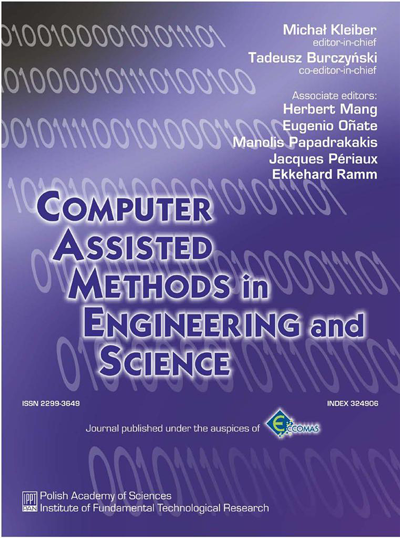Traffic network design by cellular automaton-based traffic simulator
Abstract
Braess pointed out that adding a new road to overcome a traffic congestion could cause a new traffic congestion leading to the reduction of the traffic flow in the whole traffic network, which is called Braess' paradox. The aim of this study is to formulate a traffic network design algorithm to increase the traffic flow in a traffic network. The objective function is the traffic flow of the whole traffic network and the route selection at the corners is considered as design variable. The traffic flow is estimated by a traffic flow simulator based on the cellular automaton model. A simple traffic network is considered as a numerical example. At different traffic densities, the traffic network is optimized to maximize the traffic flow. The results show that the optimized traffic network depends on traffic density. The situation presented by Braess' paradox could disappear at high traffic density.
Keywords
traffic network design, cellular automaton, optimization, Braess’ paradox,References
[1] R. Arnott, K. Small. The economics of traffic congestion. American Scientist, 82(5): 446–455, 1994.[2] A.L.C. Bazzan, F. Klugl. Case studies on the Braess Paradox: Simulating route recommendation and learning in abstract and microscopic models. Transportation Research Part C: Emerging Technologies, 13(4): 299–319, 2005.
[3] D. Braess. Über ein Paradoxon aus der Verkehrsplanung. Unternehmensforschung, 12: 258–268, 1969.
[4] J.N. Hagstrom, R.A. Abrams. Characterizing Braess’s paradox for traffic networks. [in:] Intelligent Transportation Systems, 2001. Proceedings of 2001 IEEE, pp. 836–841, 2001.
[5] L.R. Rilett, M.W. Van Aerde. Modelling distributed real-time route guidance strategies in a traffic network that exhibits the Braess paradox. [in:] Vehicle Navigation and Information Systems Conference, 1991, pp. 577–587, 1991.
[6] A. Nagurney. The negation of the Braess paradox as demand increases: The wisdom of crowds in transportation networks. EuroPhysics Letter, 91(4): 48002, 2010.
[7] Y. Sugiyama. Optimal velocity model for traffic flow. Computer Physics Communications, pp. 399–401, 1999.
[8] T. Tamaki, S. Yasue, E. Kita. Traffic simulation using stochastic velocity model and CA [in Japanese]. Transaction of Information Processing Society in Japan, 45(3): 858–869, 2004.
[9] Y. Wakita, T. Iguchi, H. Shimizu, T. Tamaki, E. Kita. Cellular automata simulation of traffic jams at the merging point of roads. [in:] B.H.V. Topping, Y. Tsompanakis [Eds.], Proceedings of the First International Conference on Soft Computing Technology in Civil, Structural and Environmental Engineering, Stirlingshire, United Kingdom, 2009, Civil-Comp Press, paper 35.
[10] M. Bando, K. Hasebe, A. Nakayama, A. Shibata, Y. Sugiyama. Dynamical model of traffic congestion and numerical simulation. Physical Review E, 51(2): 1035–1042, 1995.
[11] J. von Neumann. The general and logical theory of automata – cerebral mechanisms in behavior. John Wiley & Sons, 1951.
[12] J. von Neumann. Theory of self-reproducting automata. Illinois Univ. Press, 1966.
[13] S. Wolfram. Cellular automata and complexity. Adison-Wesley Publishing Company, 1st edition, 1994.
[14] K. Nagel, M. Schreckenberg. Cellular automaton model for freeway traffic. Journal of Physics I France, 2: 2221–2229, 1992.
[15] R.E. Chandler, R. Herman, E.W. Montroll. Traffic dynamics: studies in car-following. Operations Research, 6(2): 165–184, 1958.
[16] W. Helly. Simulation of bottlenecks in single lane traffic flow. [in:] Theory of Traffic Flow Symposium, 1961.
[17] G.F. Newell. Nonlinear effects in the dynamics of car following. Operations Research, 9(2): 209–229, 1961.
[18] R.L. Bierley. Investigation of an intervehicle spacing display. Highway Research Record, (25): 58–75, 1963.
[19] T. Tamaki, S. Yasue, E. Kita. Traffic flow simulation using cellular automata. Proceedings of Civil and Structural Engineering Computing, pp. 163–164, 2003.
[20] T. Tamaki, S. Yasue, E. Kita. City traffic simulation using cellular automata with stochastic velocity model. Proceedings of the 2004 International Conference on Parallel and Distributed Processing Techniques and Applications (CD-ROM), 2004.
[21] T. Tamaki, S. Yasue, E. Kita. Traffic flow simulation using cellular automata. [in:] Proceedings of Civil and Structural Engineering Computing. Civil-Comp Press, 2003, CD-ROM.
[22] T. Tamaki, E. Kita. Urban city traffic simulation based on stochastic velocity model. [in:] Proceedings of The Tenth International Conference on Civil, Structural and Environmental Engineering Computing, pp. 215–216, Civil-Comp Press, 2005.




